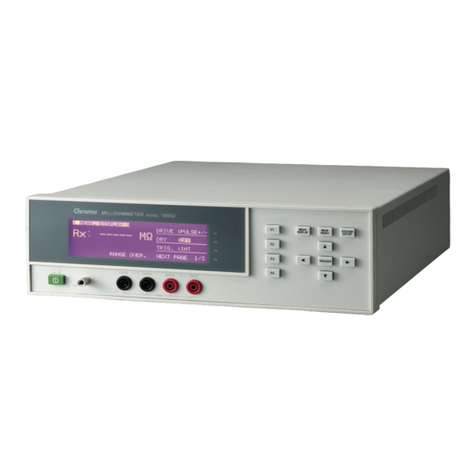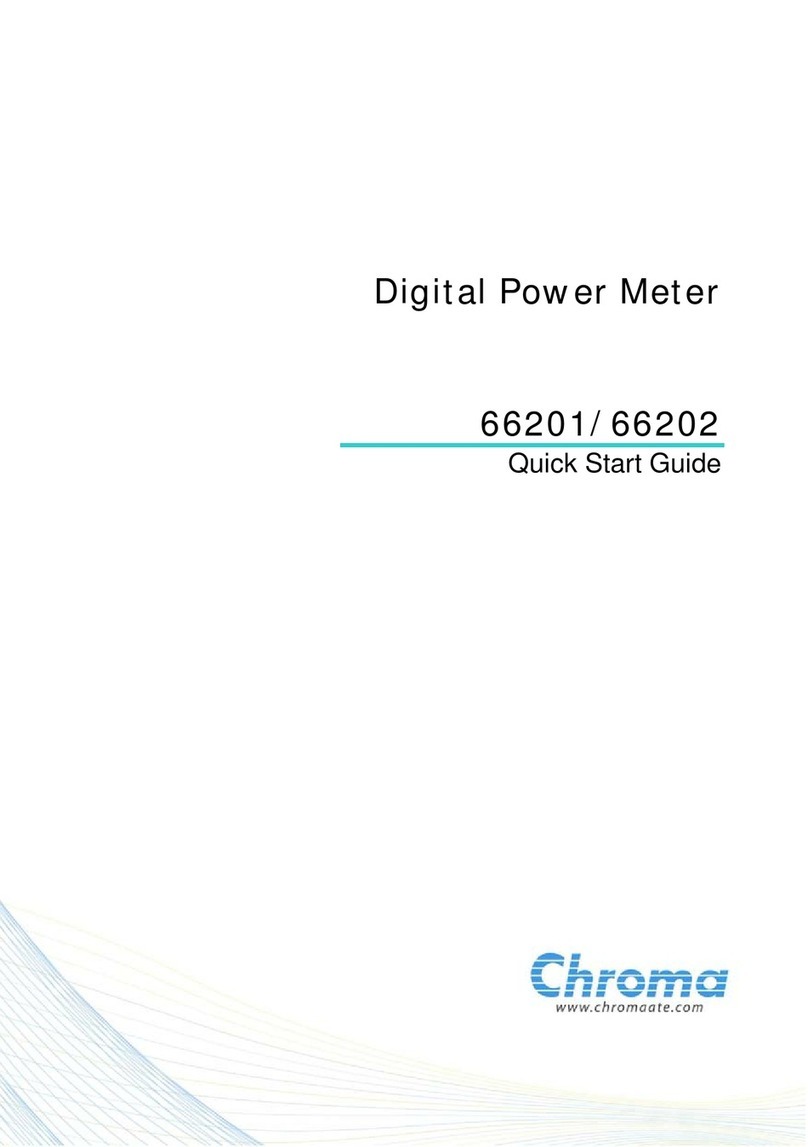
iii
Warranty
All of Chroma’s instruments are warranted against defects in material and workmanship for a
period of one year from date of shipment. Chroma agrees to repair or replace any
assembly or component found to be defective, under normal use during this period.
Chroma’s obligation under this warranty is limited solely to repairing any such instrument,
which in Chroma’s sole opinion proves to be defective within the scope of the warranty when
returned to the factory or to an authorized service center. Purchaser is responsible for the
shipping and cost of the service item to Chroma factory or service center. Shipment should
not be made without prior authorization by Chroma.
This warranty does not apply to any products repaired or altered by persons not authorized
by Chroma, or not in accordance with instructions furnished by Chroma. If the instrument is
defective as a result of misuse, improper repair, or abnormal conditions or operations, repairs
will be billed at cost.
Chroma assumes no responsibility for its product being used in a hazardous or dangerous
manner either alone or in conjunction with other equipment. High voltage used in some
instruments may be dangerous if misused. Special disclaimers apply to these instruments.
Chroma assumes no liability for secondary charges or consequential damages and in any
event, Chroma’s liability for breach of warranty under any contract or otherwise, shall not
exceed the purchase price of the specific instrument shipped and against which a claim is
made.
Any recommendations made by Chroma regarding the use of its products are based upon
tests believed to be reliable; Chroma makes no warranty of the results to be obtained. This
warranty is in lieu of all other warranties, expressed or implied, and no representative or
person is authorized to represent or assume for Chroma any liability in connection with the
sale of our products other than set forth herein.
CHROMA ATE INC.
66 Hwaya 1st Rd., Kueishan Hwaya Technology Park,
Taoyuan County 33383, Taiwan
Tel: 886-3-327-9999
Fax: 886-3-327-2886
http://www.chromaate.com

































